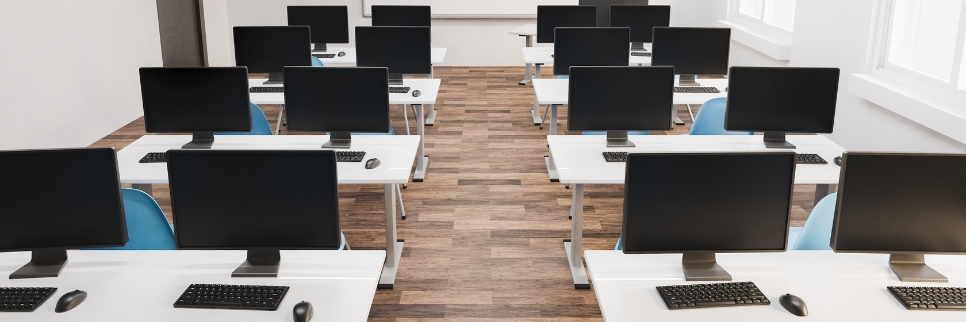Why is Singapore's education system considered the best in the world?

- December 12, 2023
- 2131
Singapore is a successful role model for many countries in Asia. This small country in Asia has achieved the status of a modern industrialized economy from a backward country in a short period of time after independence from Malaysia. The role of Singapore's education system has been significant in this transformation. Singapore does not have any crude oil reserves or other abundant natural resources.
In such a situation, Singapore decided to invest in its workforce early on and gave special attention to the nation's education. Today, Singapore's schooling system is considered the best in the world. Just because of its education, the National University of Singapore is the highest-ranked Asian university in Asia and far ahead of the major universities globally.
The secret to Singapore's economic growth lies in its education system. In the OECD's International Student Assessment Program (PISA), Singaporean children rank among the top 57 countries in the group. Additionally, Singaporean students excel in science and math subjects.
Singapore's education system is divided into different stages according to the age of students. For example, 3 to 4 year old children attend nursery school, 5 to 7 year old children go to kindergarten, 7 to 11 year old children go to primary school, and 12 to 17 year old children go to secondary school. Students aged 17 to 18 can choose junior college (or vocational education) (optional), while children aged 18 and above can choose universities, polytechnics, arts institutions, etc. for higher education (optional).
By 2024, Singapore will introduce a 'streaming system' to educate its children. Under this system, children across the country will be divided into different "streams" or "pathways" according to their abilities. Singapore citizens cannot enroll in an international educational institution without prior approval from the country's Ministry of Education.
Students are divided into three 'streams' according to their abilities. Normal (Academic Stream, College Education), Normal (Technical Stream, Vocational Education) and Express or students with superior abilities who are expected to excel in higher university education. Students are expected to obtain a certificate according to the stream in which they are placed. Express stream students take Cambridge GCEO levels, while normal (technical) students are encouraged to take vocational subjects.
Differences Between Public and Private Schools
According to 2018 statistics, 145 government primary and 41 private primary schools were receiving funding from the Singapore government. Due to the priority policy of the government, 97% of Singapore's population over the age of 15 is literate. However, there are many differences between public and private schools in Singapore, including the degrees awarded to students. Private schools are empowered to develop their own curriculum and credentials, while public schools develop curricula with GCEO-level and normal-level examinations.
Another major difference is the number of students in the class. Government schools have an intake of 32 students per class, while private schools have an average intake of 24 students. School times also vary. School timings for junior children are from 8 a.m. to 1.30 p.m. and for senior children, from 6 p.m. In the private sector, school hours start at around 8:30 a.m. and end at 3 p.m.
Cost of Education
There is a big difference in the cost of education between public and private schools in Singapore. Government schools have fixed fees, which are generally SGD 30 (US$21) per month. Private schools have higher fees and each educational institution sets its own fees.
Daily Education
Twelve-year-old Jack has a full week's schedule. His alarm goes off at six o'clock on Monday morning and he is solving math questions at half past seven. Jack gets a 45-minute break after Mandarin class on Tuesdays. Similarly, he gets a break of twenty-five minutes from 4:50 to 5:15 on Fridays.
There are also math, science, mandarin and English classes on Saturday, but the schedule is not very strict and there is a two-hour break. On Sunday, Jack's work schedule for the week starts again.
Thousands of Singaporean children follow a similar schedule as Jack to prepare for their primary school exams. Sherrill Au, mother of 12-year-old Jack, says that Jack doesn't complain much about his study schedule because his schedule is not as strict as his friends'. 'Every time I talk to other parents, I feel like I need to buy more books for Jack.'
One of the many reasons why Singaporean students do so well in the PISA exams is the country's bureaucracy, which is educated by the world's best universities and whose mission is clear to make Singapore the richest, most developed and most educated in the world.
Salaries of Teachers
One of the reasons for Singapore's high education standards is its highly qualified teachers. Teachers' salaries in Singapore are comparable to those of employees in the industrial and economic sectors. Apart from salary, they also get overtime and bonuses.
Teachers are selected from the top 5% of graduates, who have to undergo rigorous training by the National Institute of Education before taking up this noble profession. Singapore spends more than 20 percent of its government budget on education.






